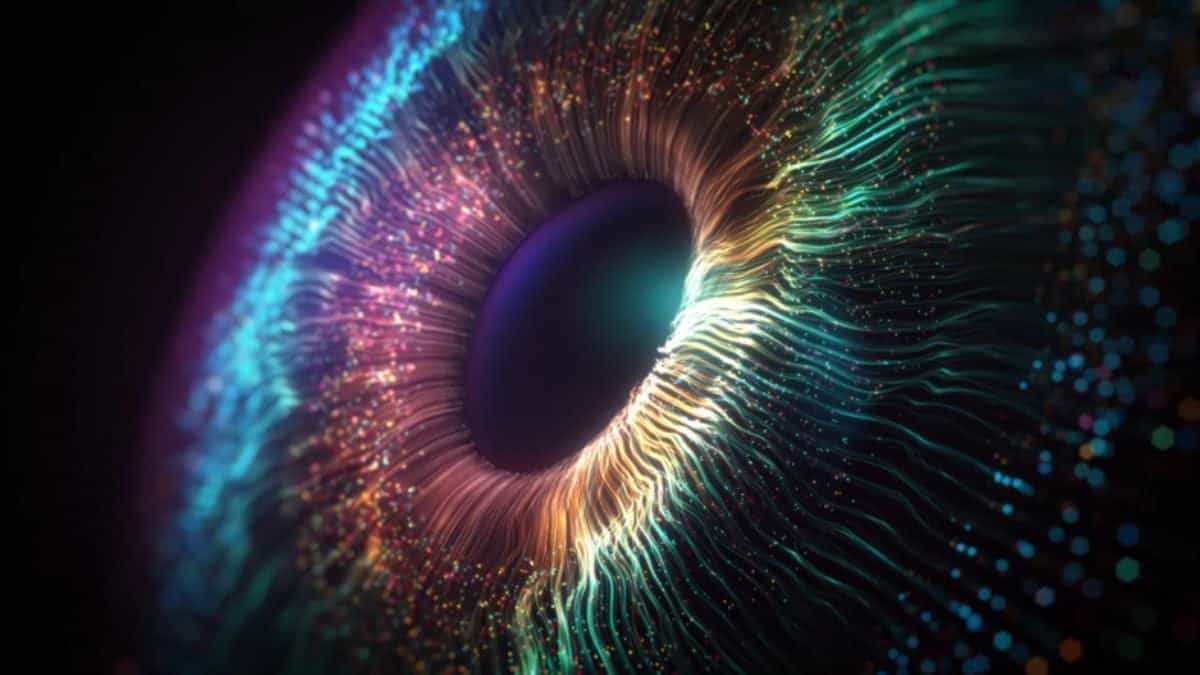Show table of content Hide table of content
A groundbreaking discovery has recently emerged from the University of California at Berkeley, where scientists have developed an innovative method enabling human eyes to perceive a previously invisible color. This extraordinary achievement has allowed just five individuals worldwide to witness a color that exists beyond our normal visual spectrum. The scientific community is buzzing with excitement over this perception-altering breakthrough.
The unprecedented color discovery
The newly developed color, named “Olo,” exists as a hypersaturated blue-green hue that was previously impossible for humans to perceive naturally. Berkeley researchers have created a revolutionary retinal stimulation technique called “Oz” that targets specific photoreceptor cells in the human eye, allowing for perception beyond our standard color boundaries.
This remarkable achievement involves stimulating just one type of cone cell while bypassing the natural overlaps between red (L), green (M), and blue (S) cones. The result is a visual experience that expands our understanding of color perception capabilities. The selective activation creates an entirely new chromatic experience for the observer.
Visual perception challenges have always fascinated scientists and artists alike. Much like only geniuses can solve complex visual puzzles involving pattern recognition, perceiving this new color requires specialized neural processing that most humans cannot naturally achieve without technological assistance.
The five participants who experienced Olo reported seeing an intensely saturated greenish tone that defies conventional color categorization. Their descriptions highlight how limited our normal color perception truly is, opening questions about what other visual experiences might exist beyond our typical sensory limitations.
How the revolutionary stimulation technique works
The Oz method represents a significant leap forward in visual neuroscience. According to James Fong, co-lead author of the study published in Science Advances, “The objective is to allow programmable control of each photoreceptor in the retina.” This precise targeting bypasses the natural overlapping sensitivities between different cone types that typically constrain our color perception.
Traditional vision relies on three types of cone cells that respond to different wavelengths of light. Their combined signals create our standard color perception. The Berkeley team’s innovation lies in their ability to activate specific cone cells independently, creating visual experiences that wouldn’t naturally occur through normal light exposure.
Science This strange red lake in Tanzania turns animals to ‘stone’.
This level of precision in manipulating visual perception parallels other extraordinary biological phenomena. Scientists who recently documented the rescue of a 5,000-pound fish were equally astonished by nature’s extremes and our growing ability to interact with previously inaccessible biological systems.
The complex technology behind this achievement involves customized optical equipment that delivers precisely calibrated light stimulation to individual photoreceptors. This technique effectively circumvents the overlapping sensitivities that normally constrain our visual perception, creating a pathway to experience colors beyond our standard spectrum.
Potential medical applications beyond visual curiosity
While witnessing a new color is fascinating in itself, the broader implications for medical applications are substantial. The Berkeley team is particularly optimistic about helping individuals with color vision deficiencies. For people with color blindness, this technology might restore missing color dimensions or even create new visual experiences beyond typical human vision.
James Fong expressed enthusiasm about these possibilities, noting that “It is possible that color-blind individuals could learn to see new color dimensions.” This hope extends to various forms of vision impairment where targeted cone stimulation might compensate for genetic limitations in visual processing.
The research team is also exploring stimulation techniques for other cone types, with potential benefits for people with tetrachromatism—a condition characterized by extreme color saturation and sensitivity. This approach could help regulate overwhelming visual input for those affected.
The human visual system’s adaptability continues to surprise researchers. Similar to how few people can quickly detect hidden patterns in complex images, some individuals demonstrate unexpected abilities to adapt to novel visual information when presented through innovative techniques.
Expanding human sensory boundaries
This color perception breakthrough raises fascinating questions about other potential limits of human perception that might be transcended through technology. Are there sounds we cannot hear, textures we cannot feel, or even entire sensory dimensions we have yet to access?
Throughout history, humans have continuously expanded their perceptual capabilities through technology—from microscopes revealing cellular structures to telescopes unveiling distant galaxies. The Oz method represents another step in this journey of sensory enhancement, potentially opening doors to entirely new perceptual experiences.
Science 50 years later, a quantum mystery has finally been solved.
The human body’s potential for adaptation and enhancement continues to surprise researchers. Just as certain supplements can dramatically enhance nutrient absorption beyond natural levels, technological interventions like the Oz method can push our sensory systems beyond their biological limitations.
As this research continues to develop, we may soon discover entirely new dimensions of sensory experience. The five individuals who glimpsed Olo represent just the beginning of what could become a revolutionary expansion of human perception, potentially transforming our understanding of reality itself and opening new frontiers in science, art, and human experience.


